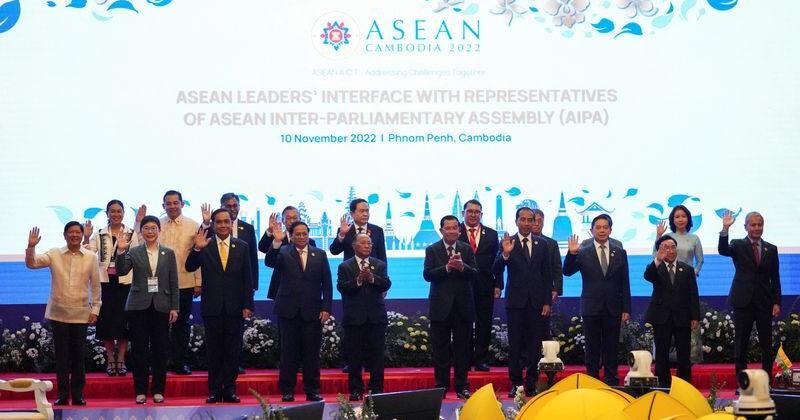Southeast Asia has attracted more foreign direct investment (FDI) than China for the first time in a decade as investors seek to create ‘China+1’ supply chains to avoid rising tariffs and other costs, according to a new report.
The six top economies in Southeast Asia received foreign investment of $206 billion in 2023, compared to $43 billion in China, according to the South China Morning Post, which cited a report released on Thursday (August 1) by the Angsana Council, Bain & Co and DBS Bank.
The report, titled ‘Navigating High Winds: Southeast Asia Outlook 2024–34‘, predicts a bright future for Southeast Asia’s six largest economies – Indonesia, Thailand, Vietnam, Singapore, Malaysia and The Philippines, which are said to generate 97% of growth in the 10-nation ASEAN region.
ALSO SEE: Rush for Thailand’s $14-Billion Handout Scheme Hit by Glitches
It said Southeast Asia has since the mid-1990s lagged China on growth measures such as real GDP, GDP per capita, trade growth, and the size of foreign and domestic investments.
But “winds supporting a higher growth rate began to shift” during that time as Southeast Asia laid the groundwork to accelerate four key growth drivers – a growing workforce, higher labour productivity, higher capital spending, and higher capital productivity.
“Based on our analysis, Southeast Asia should, in this next decade, outpace China in GDP growth, reversing the trend of the last 30 years,” the report forecast, noting that Vietnam had been the most successful country in the region under most metrics.
Between 2018 and 2022, foreign direct investment grew by 37% in Southeast Asia, compared to just 10% in China, with Singapore the standout in FDI.
Southeast Asia is two to five times more dependent on trade than other major regions, the report said, noting that trade volume accounted for 89% of the region’s GDP growth over the last decade.
RCEP boosting trade
And a key reason why trade with Asia is accelerating is because of the Regional Comprehensive Economic Partnership (RCEP) and other trade liberalization measures.
“Provisions in the RCEP regarding foreign investment and intellectual property rights could draw multinational corporations into Southeast Asia,” it said, adding: “The agreement also increases the region’s collective bargaining power versus competing against China individually.”
The report lists three key reasons that could give significant tailwinds to economic growth in Southeast Asia.
The first was “China+1” and the fact “businesses are diversifying away from China” for reasons such as disruptions endured during the Covid pandemic, which made companies want to avoid over-reliance on one market, as well as political factors.
A second reason was ‘friendly’ inter-regional competition, as Southeast Asian countries now compete for investment and growth.
The third reason was simply because “Southeast Asia is a fast-growing, well-located region” that benefits from trade, tourism, and investment.
“We expect Southeast Asia to grow GDP by 5.1%, on average, in the next decade,” it said. “Vietnam and the Philippines are expected to be the faster-growing countries, with Vietnam continuing to stay ahead.”
The report also notes possible headwinds, negative factors and five ways that Southeast Asian nations can seize the opportunity to boost their growth rates.
‘Invest in human capital’
Bain and Co recommended that Southeast Asia learn from other fast-growing economies and address economic and business fundamentals. “The most important investments are in human capital (education, vocational training, worker health) and good governance,” it said.
It suggested that countries in the region should pull five levers to bolster growth:
- invest in new growth sectors;
- foster tech-enabled disruptors such as entrepreneurs and aggressive incumbents;
- expand capital markets’ breadth and depth;
- accelerate their green transition;
- And, commit to growth-friendly multilateral initiatives, such as RCEP, the Belt & Road scheme and a transnational electricity grid.
- Jim Pollard
ALSO SEE:
New US Chip Equipment Export Rule to Hit Taiwan, ASEAN States
Solar Overcapacity Kills Projects, Fuels Bankruptcies In China
Vietnam Enjoys Big Jump in Exports, Industrial Production
Thai Economy Rocked by Factory Closures, Cheap Chinese Imports
Chinese Firms Seek Malaysian Help to Avoid US Tariffs: FT
China Signs $2.8bn Deals in Malaysia, Eyes Pan SE Asia Rail Link
























